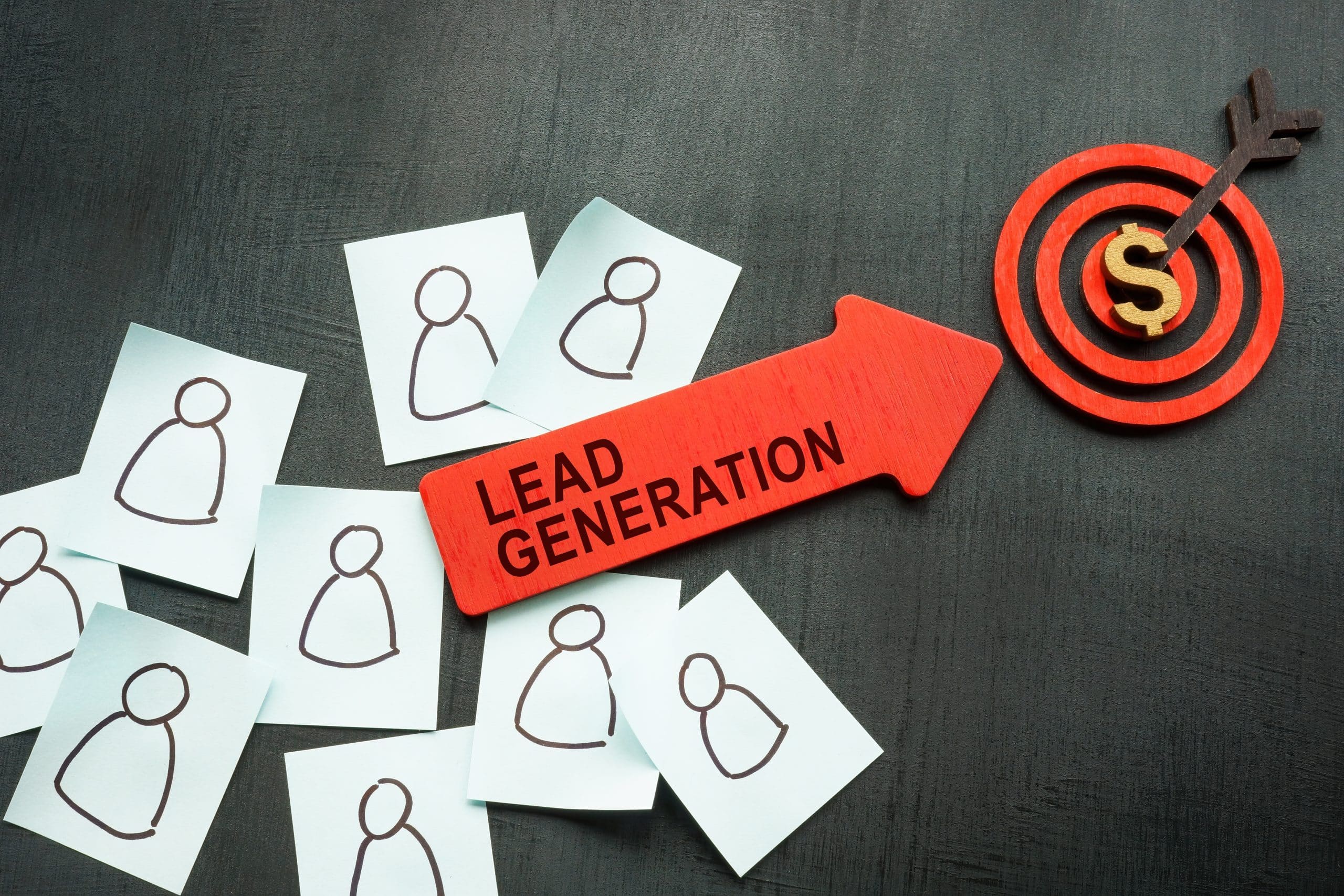Landing pages are a key part of marketing strategy for most businesses. That’s because they offer a way to target users, show off a specific set of information, and convert prospects, all in one place. Let’s get deeper into what a landing page is and how best to utilize one.
What Is A Landing Page?
A landing page is a standalone website page that customers arrive at from various sources — an email, ad, QR code, social feed, or other digital place. Landing pages are designed to capture information from prospects or users, through filling out a form or signing up for an email list. They may even sell a product or service directly, and they usually offer something useful in return, whether it’s a whitepaper or a coupon or offer code.
Landing pages are typically focused on one audience segment, one desired action, or one campaign. Their specificity makes them a useful tool in a marketing strategy.
Benefits of a Landing Page
Generating Leads
Landing pages are designed for a specific audience and can be tailored to meet specific goals in the buyer’s journey (and specific marketing goals). You can create pages designed to generate leads by offering valuable content or other useful information to readers. Consider social media channels or email newsletters as places to promote a landing page to capture user contact info and generate leads.
Converting Users
You may also use landing pages as a conversion tactic once a user has become a lead. Your prospect can be served the landing page once they’ve become familiar with your services or products. Depending on your goals, the call-to-action (CTA) could be a trial signup or purchase button to move the user quickly to convert.
Keeping a Narrow Focus
The homepage of a company and its resources and product pages may contain a ton of information — too much, if a user has a single goal or question. A landing page offers a way to eliminate distraction and provide the user with tailored information and a single ask. It’s simple and decision-oriented.
Building or Reinforcing Your Brand
You could deploy a single landing page, linked from a QR code or online event, for example, to remind users of what your brand does and what it stands for. This can be useful for users new to your brand, or as you’re building a net-new name.
What Constitutes a Landing Page
With about 2 billion active websites, there are huge numbers of web pages in the world today. A landing page stands apart through its specificity and a single call to action. Homepages, solutions pages, product pages, and other common website pages are much more broad, covering many topics and often serving as a content library. They might be useful for users scrolling to learn more or browse casually, but they aren’t optimized for action. A user can easily get distracted or lost on a busy page.
While landing pages can be ideal for conversions, they can also help educate users and build your brand. You can consider landing pages for a range of goals, and test them carefully to see what users respond to. Whatever the goal, though, make sure to keep a tight focus topically and serve only one CTA to users.
Different Types of Landing Pages
When you start building and deploying landing pages, your first step should be considering their place in the customer journey. These pages offer a lot of flexibility, so you can consider using them at various points in the funnel. Landing pages that are well-matched to their audience’s needs and buying stage will perform best.
Landing pages fall into a few categories:
Lead Generation Landing Pages
As the name indicates, lead generation landing pages focus specifically on capturing visitor information, usually with a form. They can ask for as little as an email address, depending on marketing goals and the industry. The single CTA on a lead gen page is a form or simply a contact information field. These pages normally offer some type of download or other freebie in exchange. Study the captured data to refine your understanding of who your audience is and what interests them. You can then optimize the page and target ads accordingly.
Click-Through Landing Pages
Click-through landing pages are less focused on generating leads or capturing user data, and more designed to educate users on the product’s benefits and building trust. Instead of a form, a CTA button directs users to a page to complete the action. You may use these sites for prospects further down the funnel who are aware of what your business offers. For B2B, “schedule a demo” or “chat with sales” might be an appropriate CTA, whereas B2C companies might direct a user to “buy now” or “get offer.”
Product-Focused Landing Pages
These landing pages are designed to educate users on particular items or services, which can be handy for companies with a huge product range. They can lay out the product features, pricing, and other details in one place and ask the reader to purchase. See our expert’s recommendations on how to leverage Realize and build landing pages that convert for Black Friday Sales ads.
Event Registration Landing Pages
These landing pages are handy for an upcoming event, whether it’s live, recorded, or in-person. You can set them up quickly, posting event data and any special offers, and capture user registrations there.
Home Page vs. Landing Page
Home Page
A business’ home page serves as its mission control center. It lays out what the business offers at a high level, then uses the top-level menu and links throughout to let users choose where they’d like to go next. A strong home page introduces the whole business, so the CTAs are likely more broad as well. The home page could be the first step in a buyer’s journey, or a way for a user to get more familiar with your products and services. It reflects the company’s brand and can showcase all products in one place. But, a home page isn’t designed for conversions.
Landing Page
A landing page, meanwhile, dives into one topic, with a specific CTA to match. If a user finds your landing page, they probably already have some understanding of what your company does and what it might offer them. They’re further into the customer journey than a user who’s just landed on your home page for the first time. A landing page is less cluttered and distracting than a home page, so once your user lands there, the CTA is very obvious — and, in turn, the conversion path is much clearer.
Sales Page vs. Landing Page
A landing page aims to capture leads or drive a specific action (like signing up for a newsletter), while a sales page focuses on persuading visitors to make a purchase, offering detailed product information and a clear call to action.
Sales Page
These pages include product pages, subscription pages, and sales pages for buying a specific service or item. The CTA asks the user to decide to buy something while on the page. Sales pages, like any landing page, should have a compelling headline and clear CTA, as well as product descriptions, prices, and any customer endorsements or case studies.
Landing Page
These pages cover a range of purposes, but usually aren’t asking users to make a purchase on the spot. Landing pages are used to capture leads, nurture prospects, or encourage downloads or event registration — whatever specific action will move them closer to the sale. Compelling copy and a clear CTA are also essential, as well as a strong offer and a form to gather information, such as an email address.
How to Drive Traffic to Your Landing Pages
You can employ a range of tactics to draw attention to your landing pages. At a basic level, every landing page should be clear and simple, with a single CTA. Make sure the value proposition is clear and the page is easy to navigate.
Here are some other tips for getting traffic to your landing pages:
Organic Search
As with any other type of web page, organic search is crucial for drawing visitors. Use the same best practices for this search engine optimization (SEO) as for any other page — identifying the best keyword phrases, using relevant links, and offering original, useful content to readers. Update content regularly and make sure all links are working on your landing pages. Also, consider how backlinks can support your landing page goals to increase search rankings.
Optimization
Understanding all the data associated with your landing pages will help dictate how you optimize those pages over time. Landing pages can be strong performers for a marketing team, but they have to be optimized constantly, so A/B test everything on the page, from the headline and CTA to the images and length. Utilizing a dedicated performance AI in both the creation and targeting of your landing pages will help ensure that you’re continuing to test and update in real time.
Consider these metrics as you’re gauging the success of landing pages:
- Conversion rate: This is a performance marketer’s top goal, and conversion rate optimization (CRO) is an ongoing project. You can continually test all the elements of your page to keep optimizing.
- Bounce rate: This is the segment of site visitors who leave your page without doing anything. It’s an important one for targeted landing pages, so keep testing and experimenting to get this number lower.
- Average time on page: The number that’s best here will depend on your particular goals and audience. An engaging video might keep readers on your page longer, while short offer pages or pages that answer a question will reflect a shorter time on page.
- Traffic sources: This can be a fascinating look into where your visitors are coming from, and can help you tweak your marketing mix, depending on how many paid vs. organic sources there are. You can also examine conversion rate by traffic source to get a sense of which channels resonate most with your audience.
You may choose other metrics depending on your performance marketing goals — start with a standard set and go from there.
Paid Search
This common advertising channel places ads at the top of search engines to align with particular keywords. These pay-per-click ads require strong copy and design and are targeted according to demographics and other data. You can create focused, topical ads, then direct visitors from these ads straight to your landing page.
Paid Social
Paid social has become a pillar of marketing programs, and can be used for landing pages, too. These ads offer advanced targeting features, and each channel has its own particular audience to advertise to in order to grow your business.
Email Campaigns
The emails your business sends can link to landing pages to reach prospects and customers. Email has a large reach and low costs, so consider nurturing existing customers and appealing to new ones with an email that points to the aligned landing page.
Target the Right Audience
To create and deploy landing pages that perform, you have to know who you’re targeting. Make sure that messaging and offers are aimed at meeting the needs of your audience. The specificity of landing pages allows you to make one for each of your audiences, focusing each on the right people. Then, you can feature tailored content and one specific offer or ask on each page.
Focus on User Experience
In a busy and repetitive digital landscape, users are quickly becoming fatigued, particularly on search and social. To cut through the noise, use clean, easily-navigable design, make it mobile-friendly, and highlight the CTA throughout the landing page to make the entire experience positive for users. You can test using the CTA once vs. placing it several times throughout the landing page — but only use one CTA on any given page. Make sure that the copy and the design are clear and actionable for users. Consider video where appropriate, and make sure to include subtitles.
Key Takeaways
Landing pages play an important role in marketing strategy, particularly in a busy digital landscape where user fatigue is common. Using the focus that a landing page offers, marketing teams can employ a single message and ask for a single action from users. These pages can be part of a tailored buyer’s journey that incorporates email, paid advertising, social channels, and more. They should be measured and optimized frequently.
Frequently Asked Questions (FAQs)
What is the difference between a website and a landing page?
A website is a company’s footprint on the internet, changing and updating frequently to show off its offerings in an appealing way. A landing page is a single, standalone web page that’s designed to reach a particular audience segment and encourage that audience to take action, whether it’s converting or purchasing.
What is a landing page and example?
A landing page is a standalone page with a singular purpose in the marketing funnel. It can be designed to convert a prospect by collecting personal information, or to close a sale by selling a product or service. Click here for an example.
Do I need a landing page if I have a website?
Landing pages play a different role than a website does. Any business should have a solid, informative website containing products and services information, plus customer stories. However, when you’re looking to reach a particular audience, a landing page can help you narrow in on a topic without overwhelming users with the entire website.



